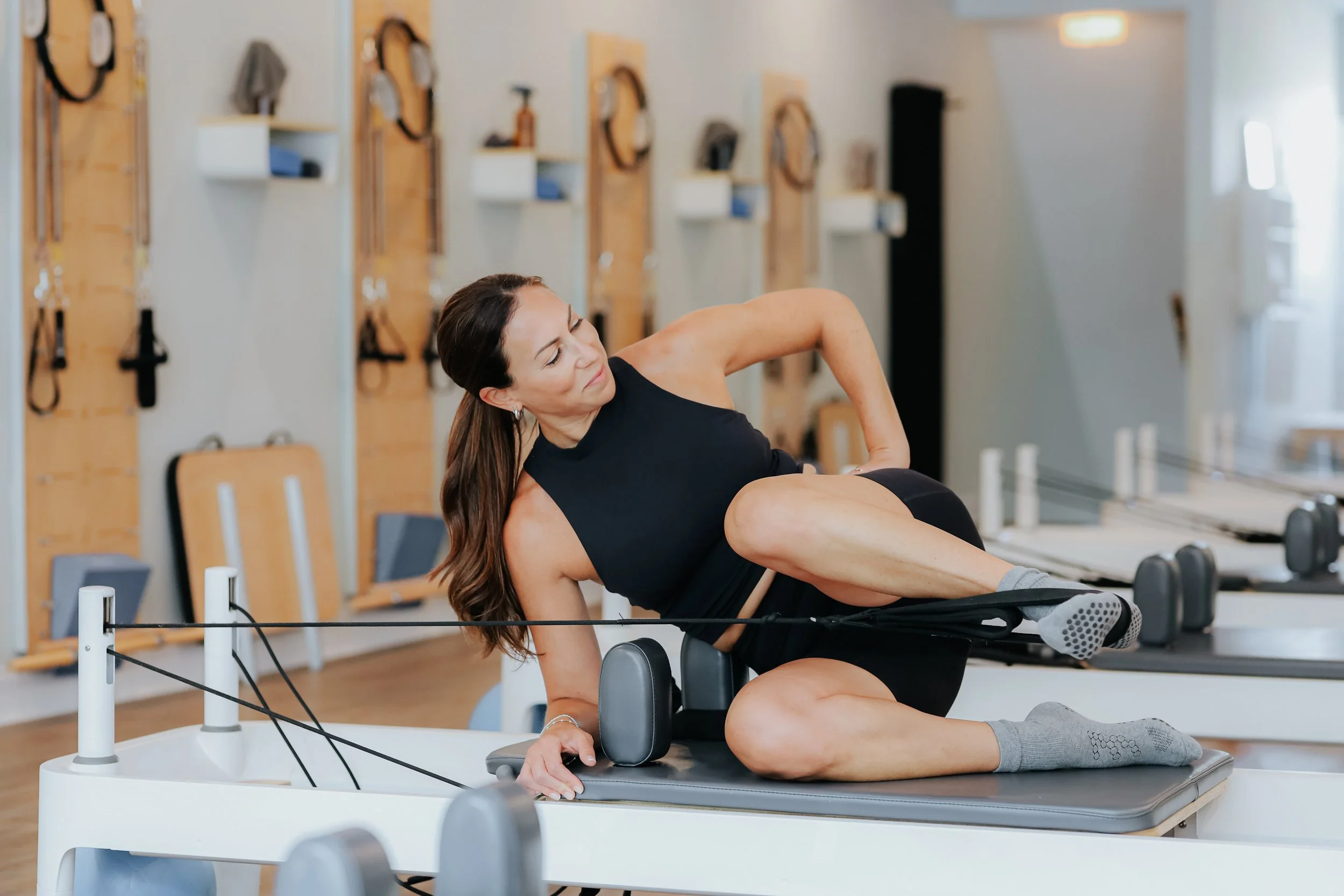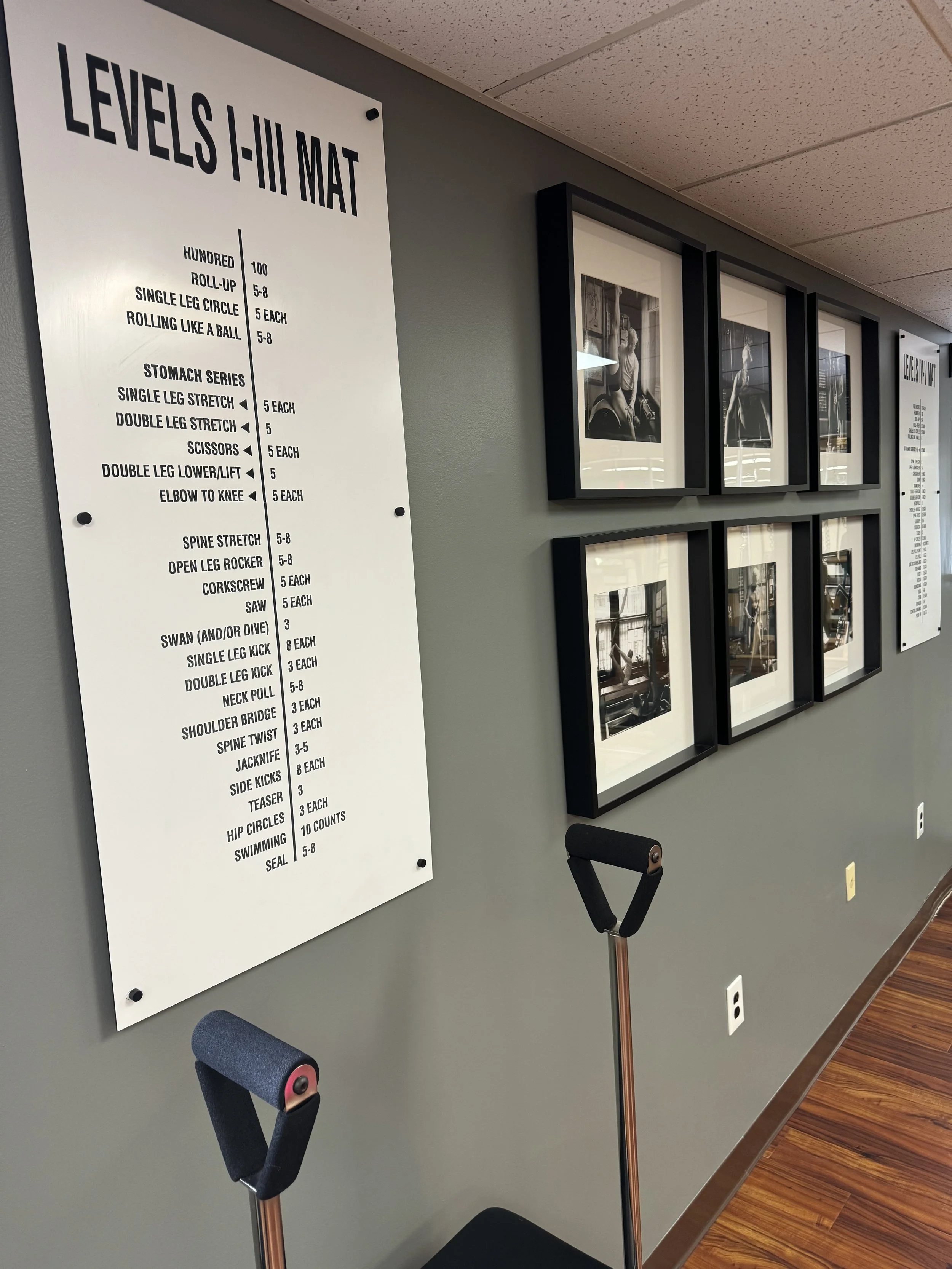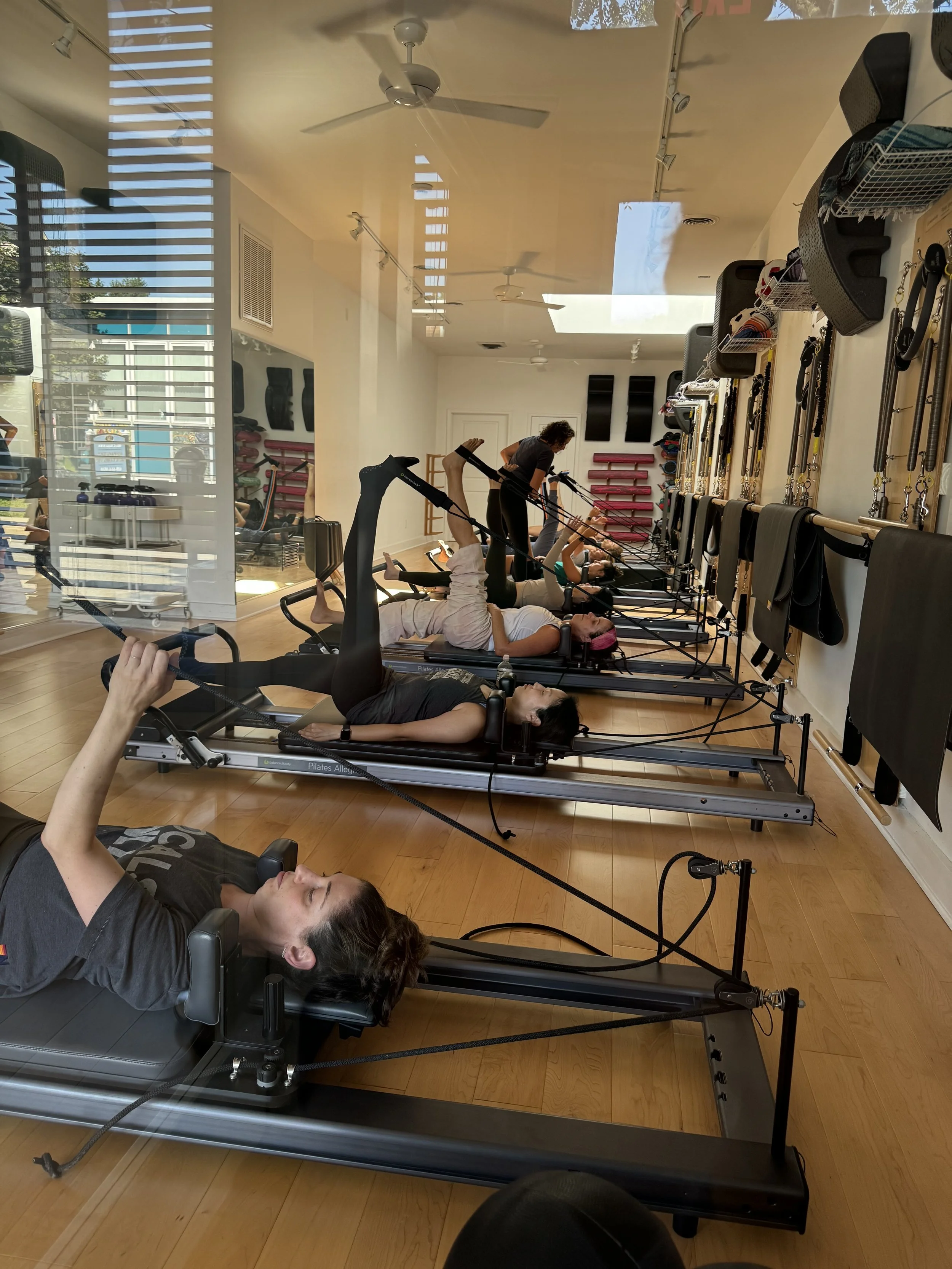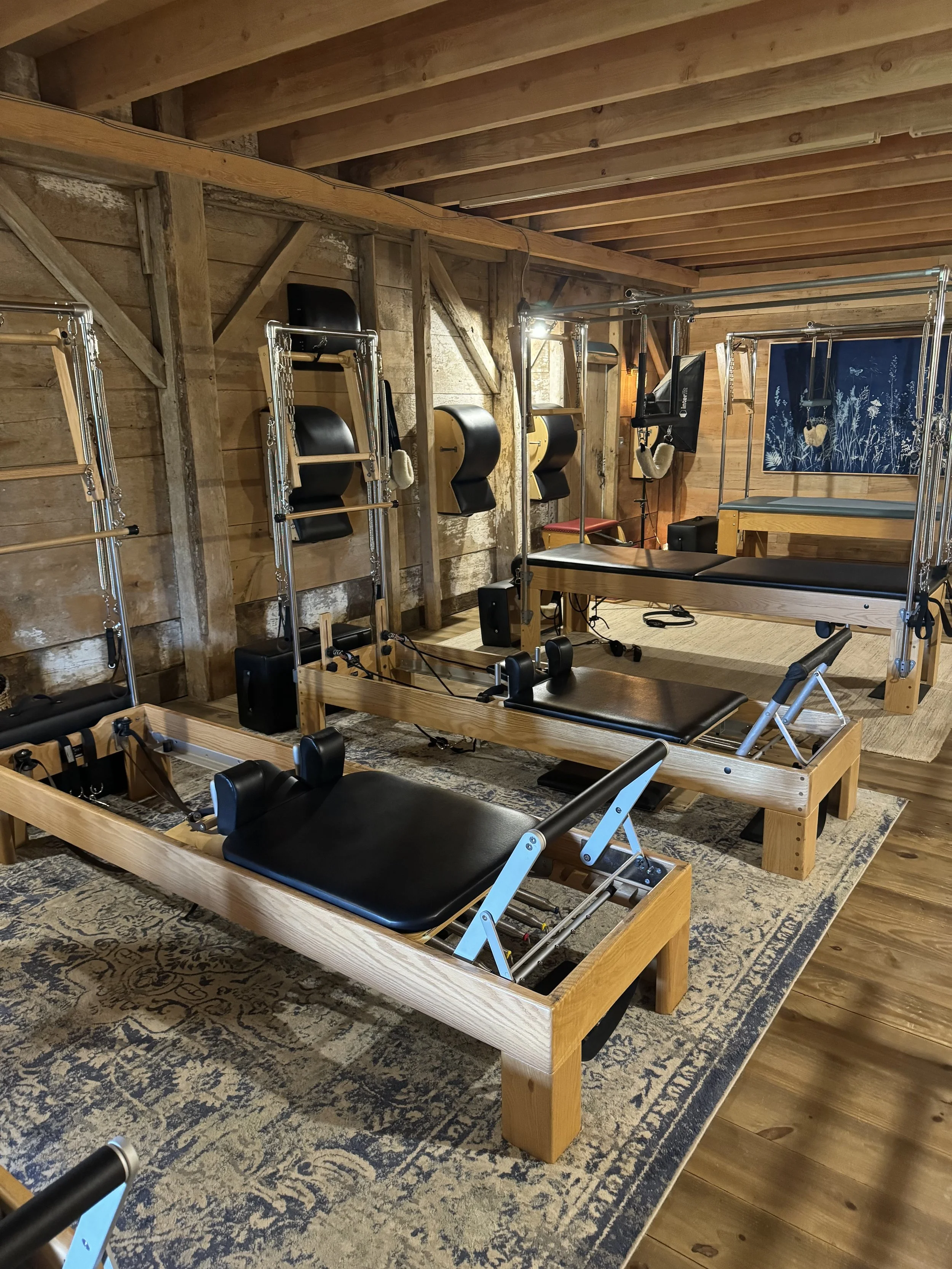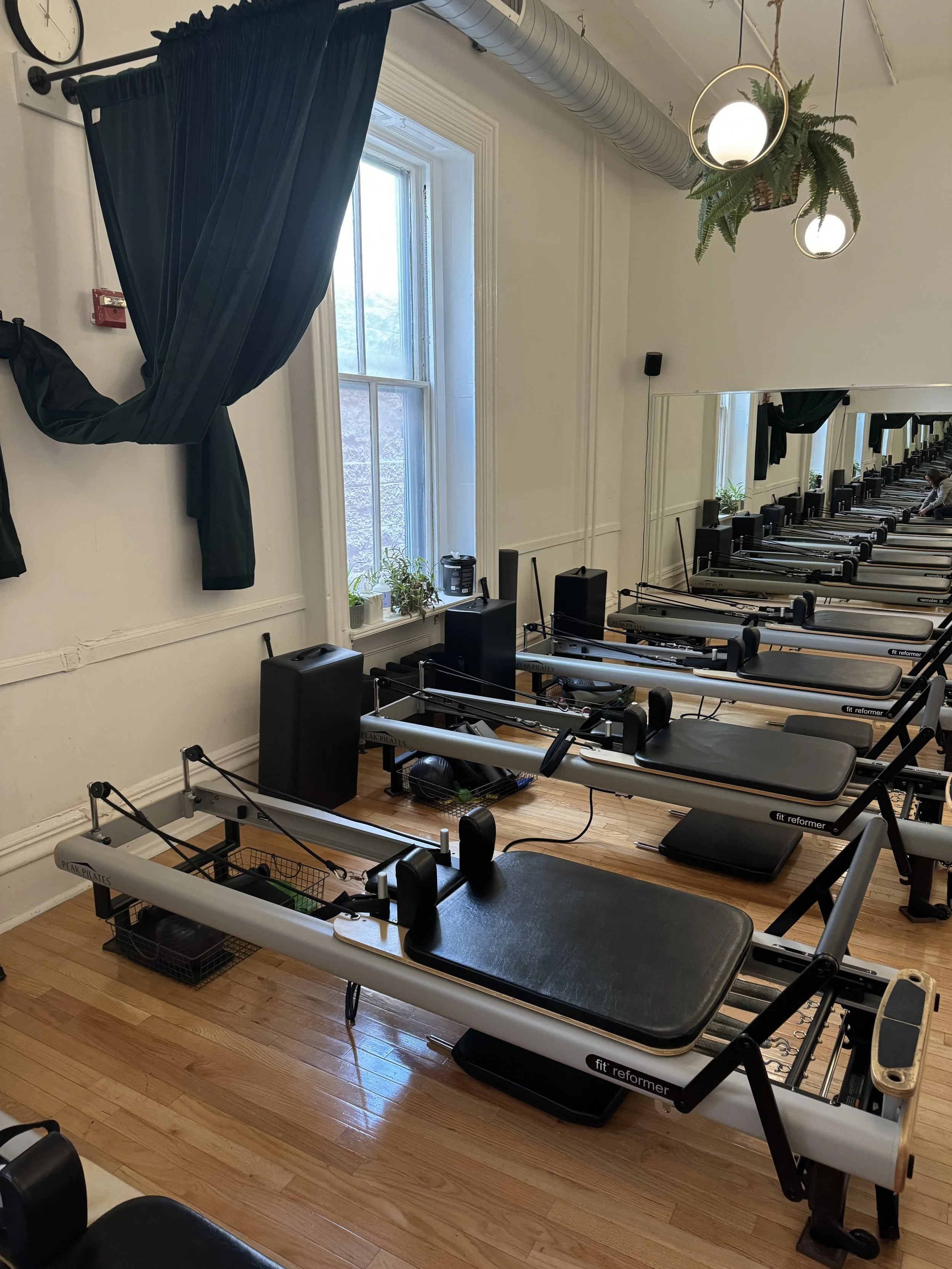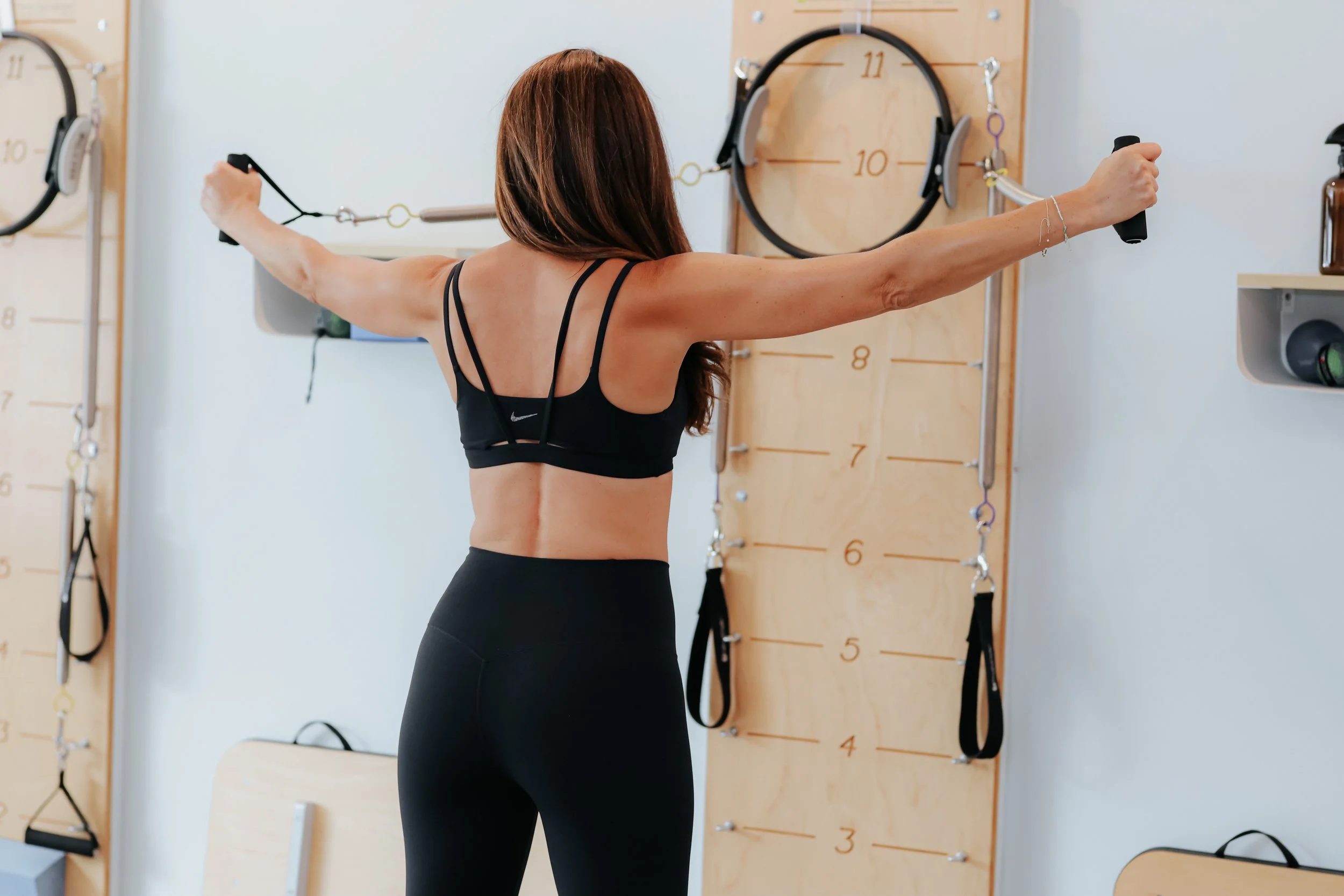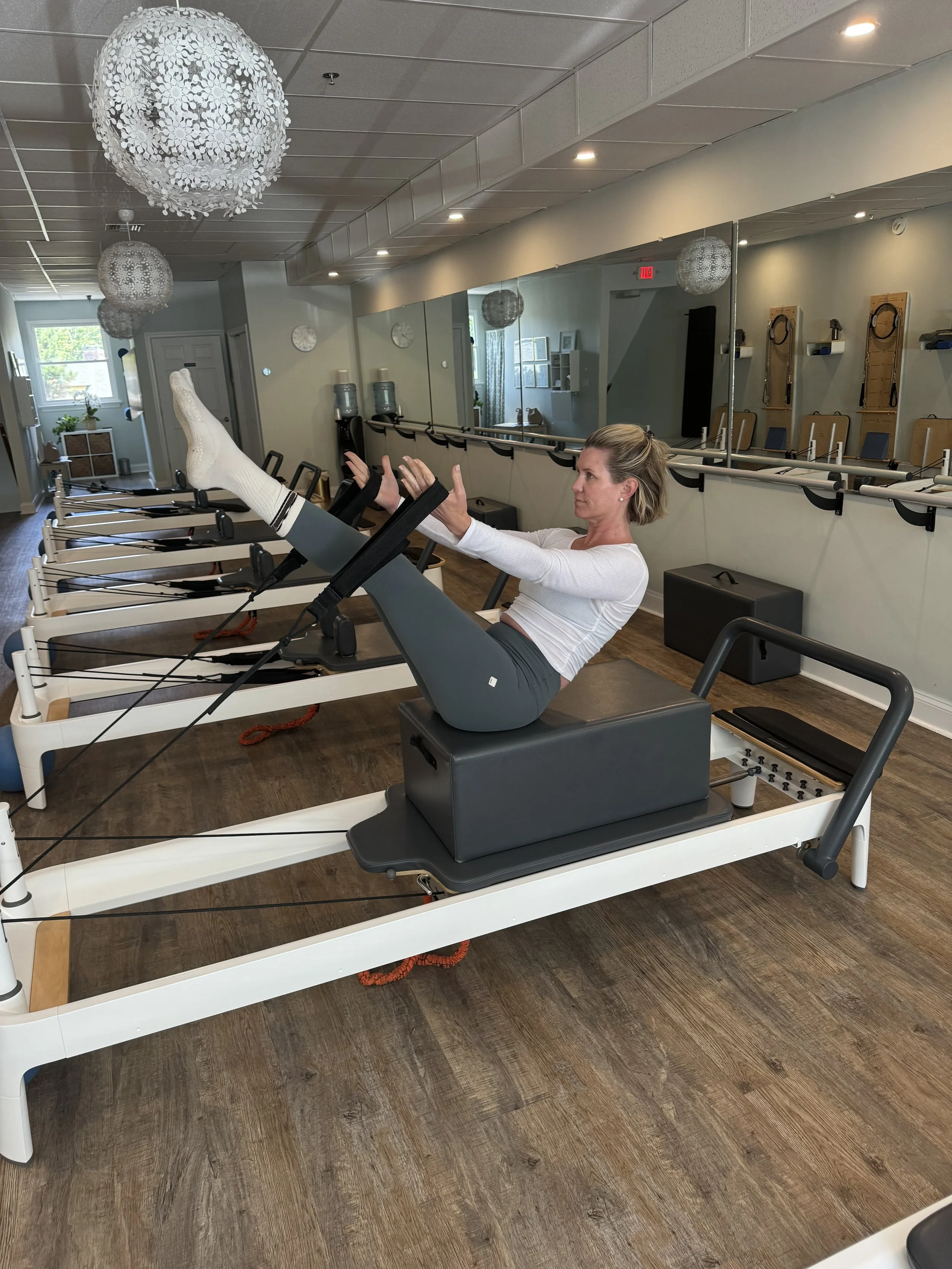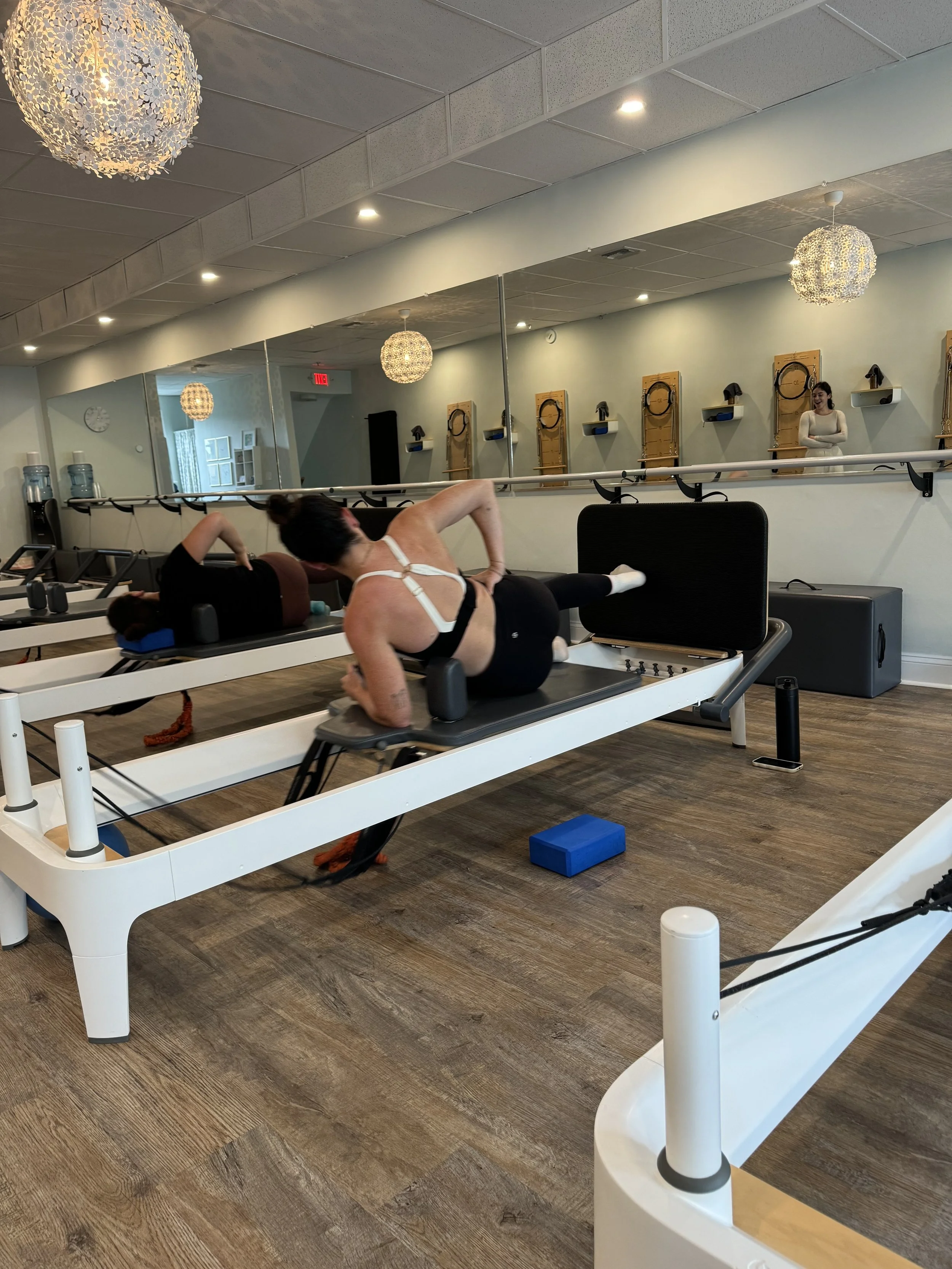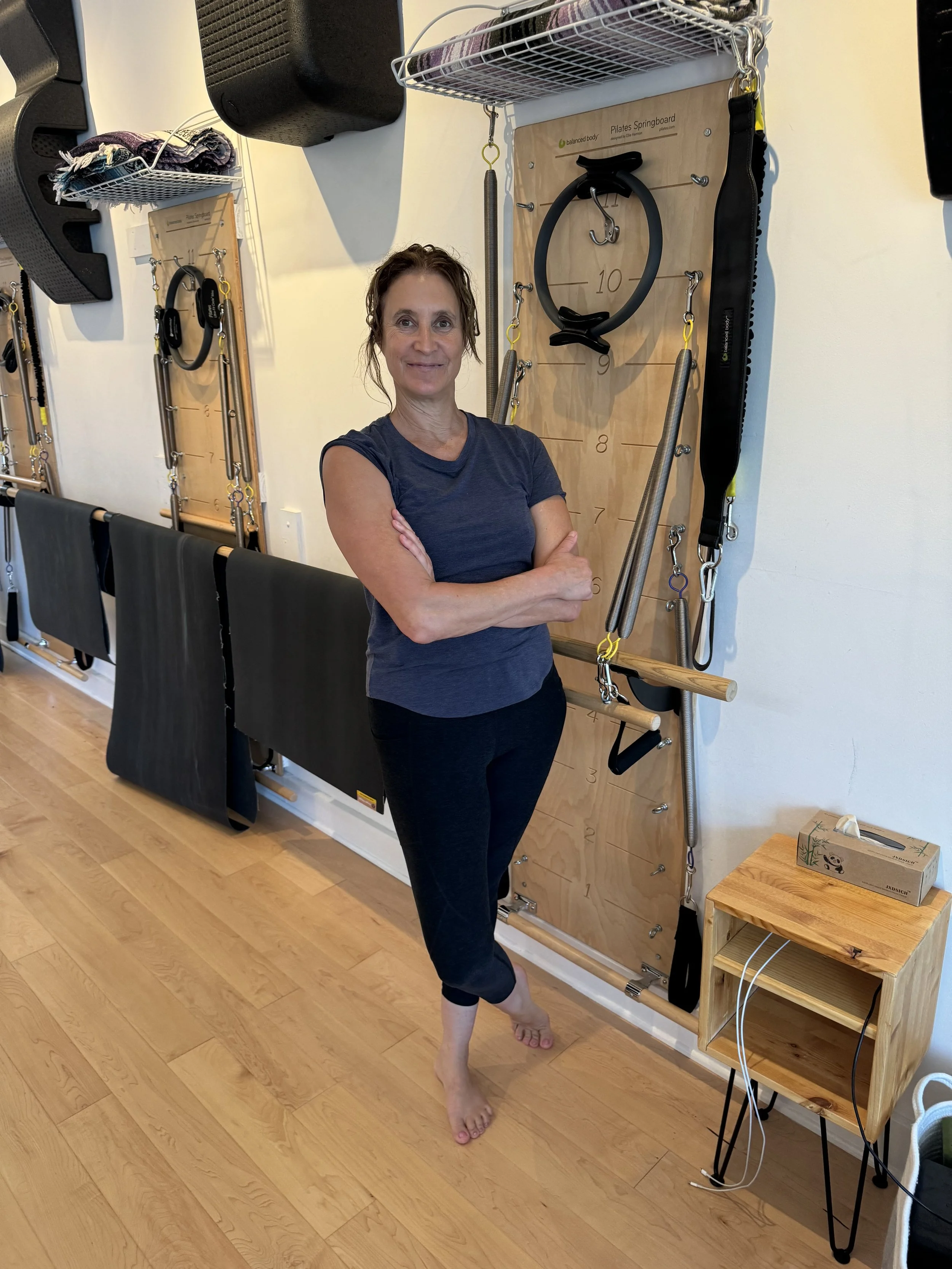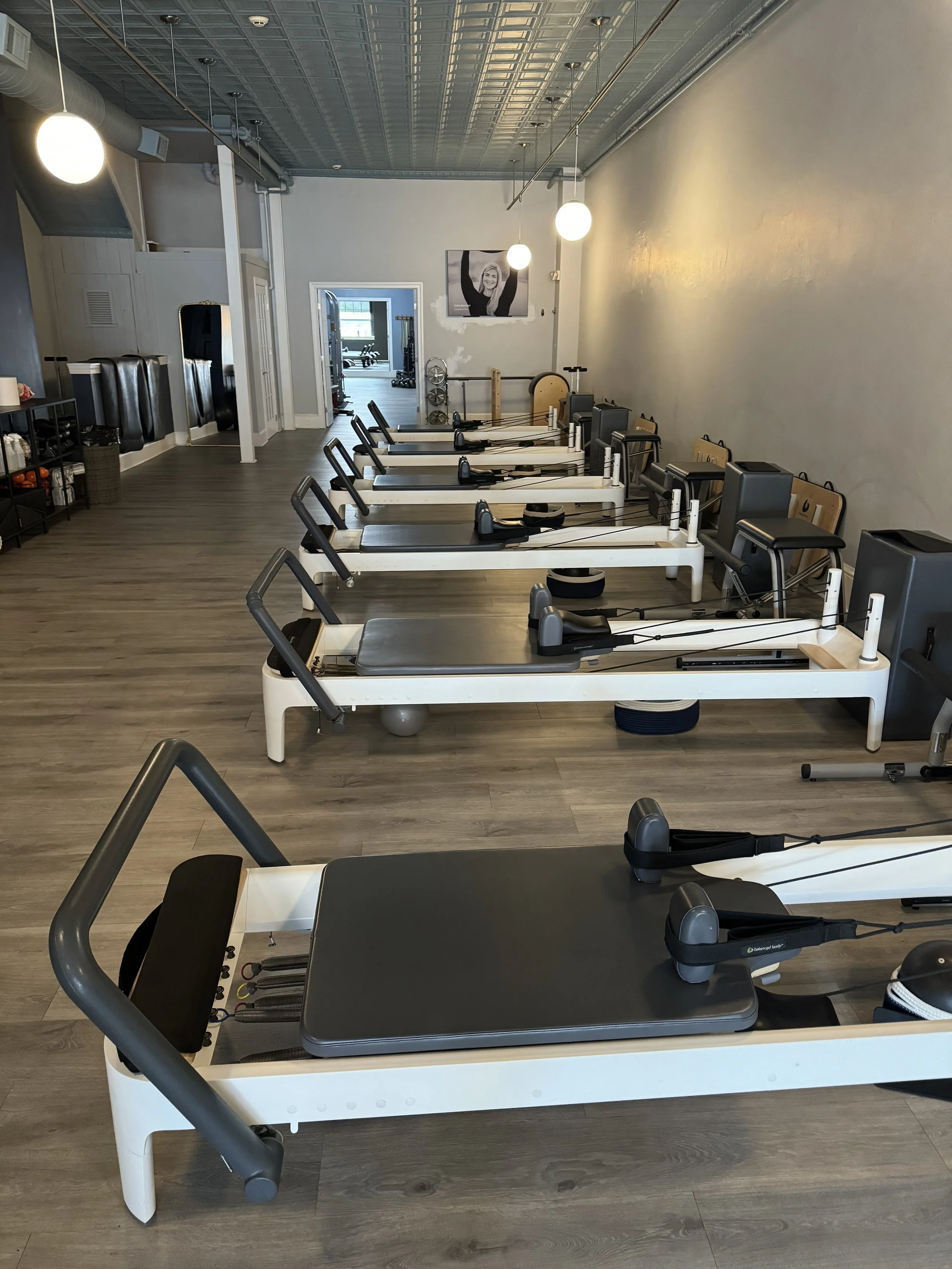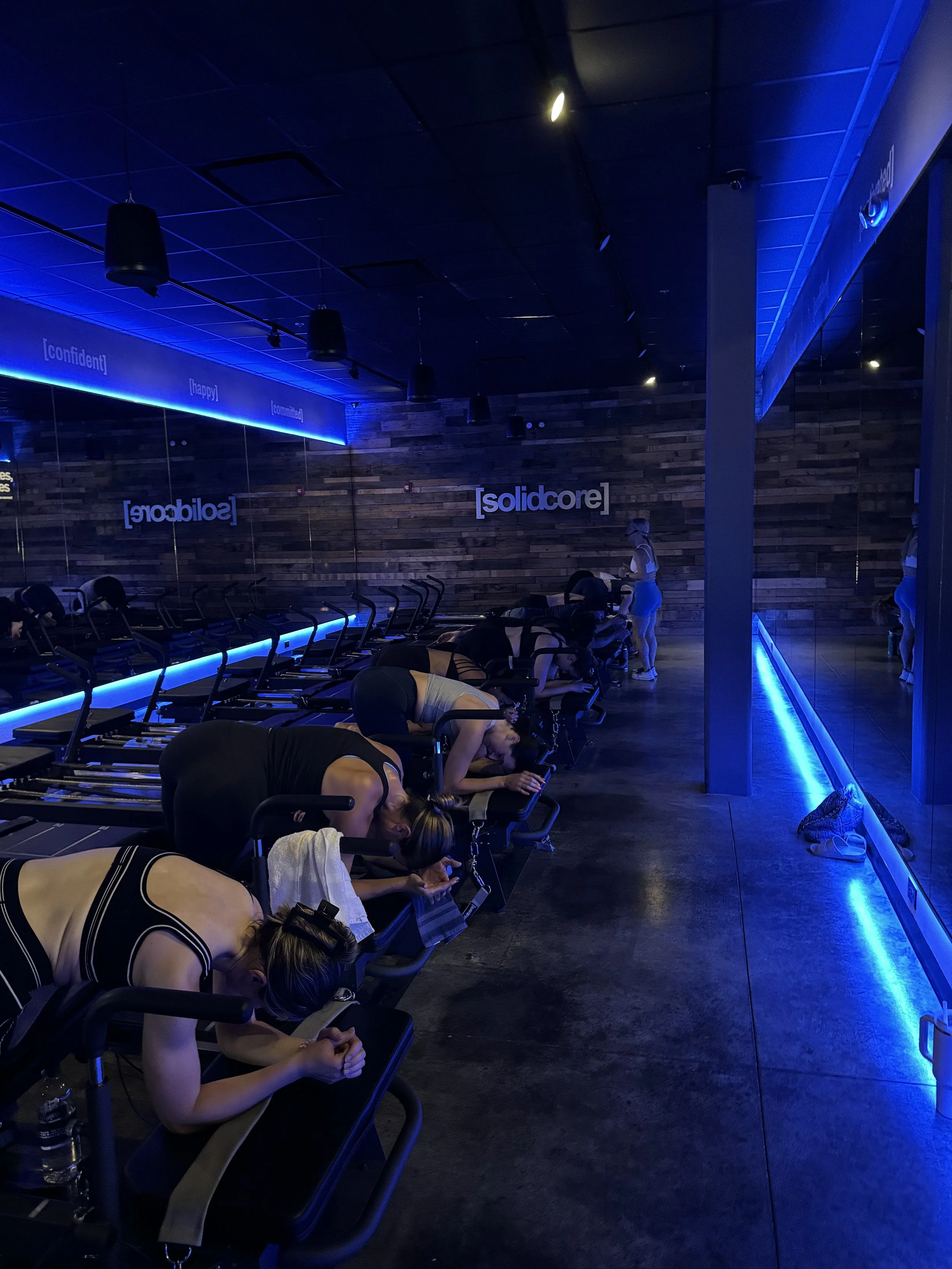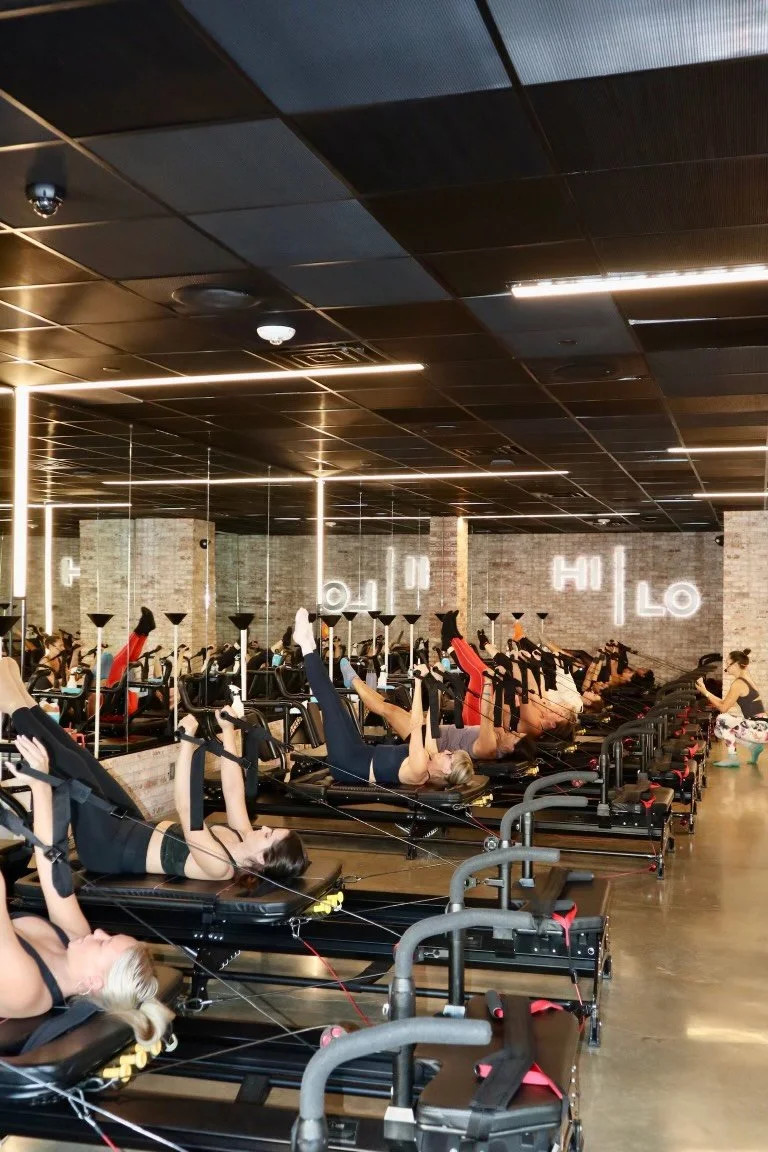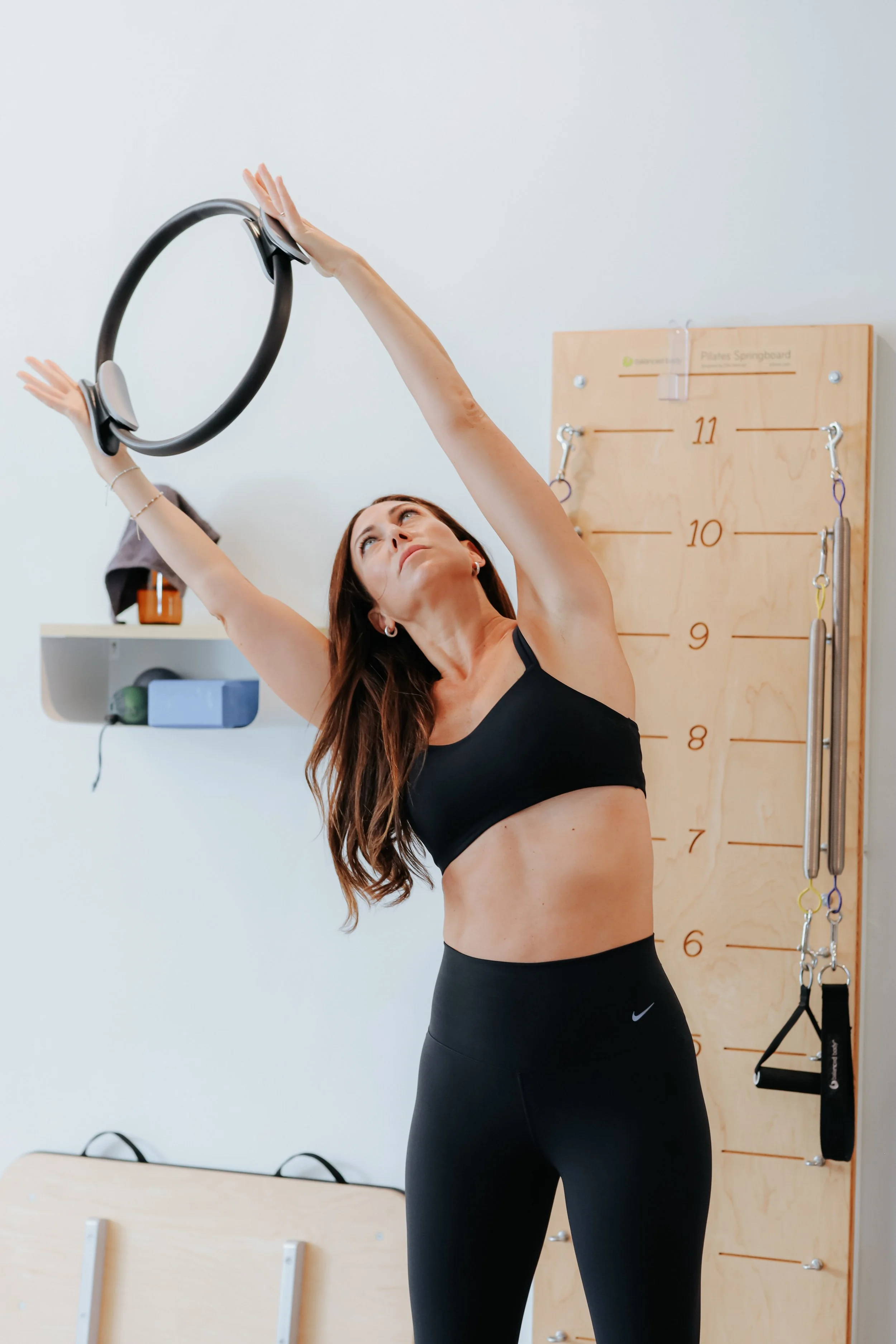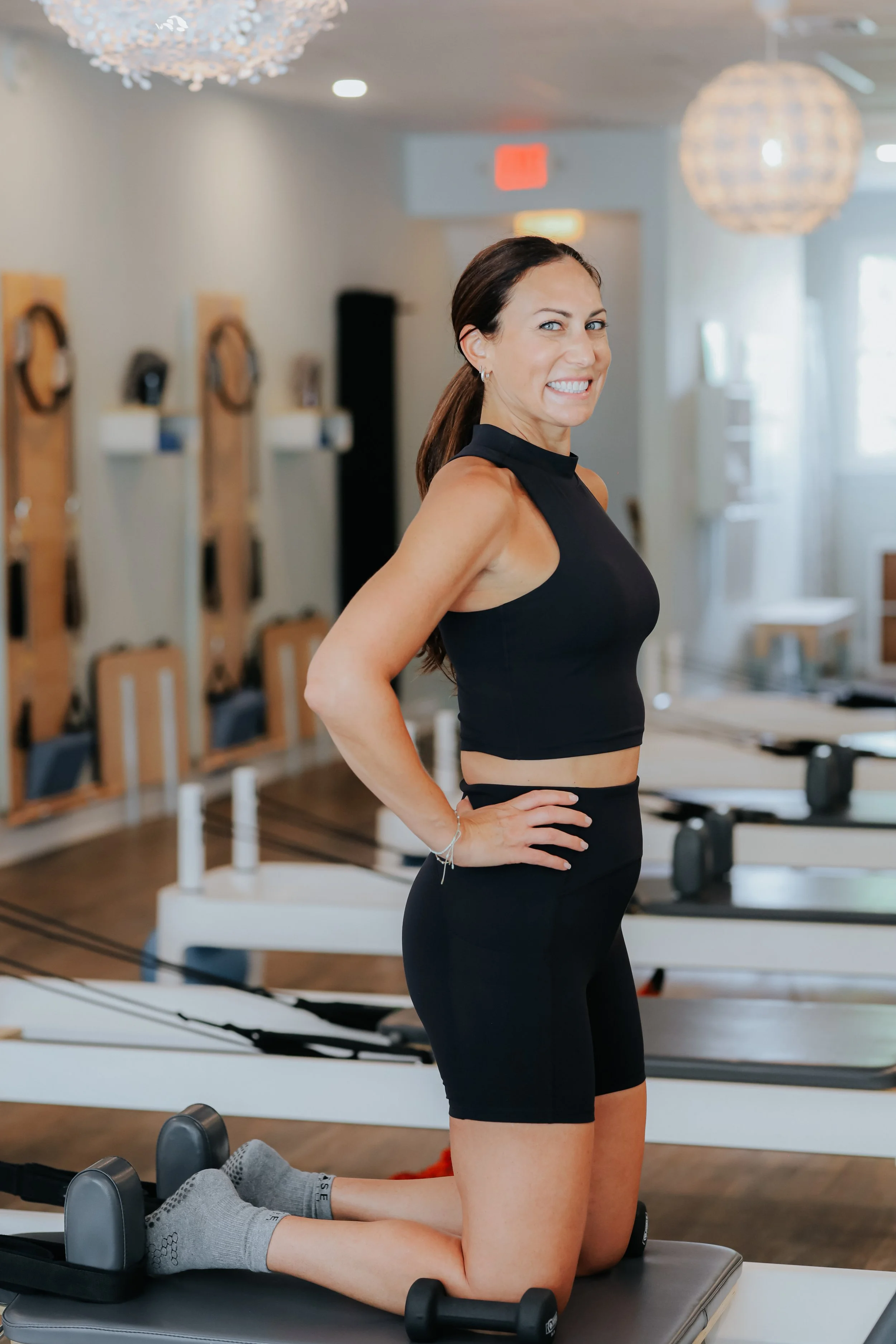So, You Want to Do Pilates?
Now what?
Everyone and their mother (literally, their mothers, too) want to do Pilates right now. Pilates workouts are the most desirable way to exercise at the moment. Sure it may be trendy to do Pilates, but Pilates was developed in the 1930’s so it’s been around for a bit. And it’s rooted in basic principles of concentration, control, center, fluidity, precision and breathing.
But what exactly is Pilates? And I don’t just mean that it’s a method of exercising created by German physical trainer, Joseph Pilates. What does it mean to say, “I want to do Pilates”? There are several varieties of Pilates that it could be overwhelming for someone who knows they want to try the format. Words like Reformer, mat, Megaformer, classical, contemporary are thrown around when it comes to Pilates. And understanding these formats can help to best give you the workout you are looking for. So I’m going back to basics here. Even for myself, who has been doing Pilates for close to eight years. I want to break it all down for you with this post. And to do so, I spent the past few weeks visiting with some of the most popular Pilates studios in our area to have the real pros help me help inform you.
A lot of people use Pilates to build strength and increase mobility and flexibility. But people also use Pilates to heal. Ellie Herman, owner of Ellie Herman Pilates and the creator of the Springboard, told me that she found Pilates in the 80’s when she tore her ACL. She was a dancer and after doing Pilates she was able to return to dancing without ever needing surgery, and to this day, she has no arthritis in her knee. Pilates is defined by Katie Barbieri, owner of TruFit Pilates in Phoenixville, as a “system of exercises that work with bodies from the core outward. It is healing. It is recovery. It is also progressive. So you can take someone off the streets in a wheel chair and put them on a Reformer, all the way up to our pro athletes.”
CLASSICAL PILATES
To really understand Pilates, you have to start with Classical Pilates. I skipped this part in my own practice and find myself longing to go back to the foundation and relearn. So if you’re considering trying Pilates out, I recommend starting with a classical class before progressing to the sexy stuff that you see on social media. And of course, I’ll tell you where to go, so keep reading.
Classical Pilates is a set of defined exercises in an established order that was created by Joseph Pilates. Classical Pilates exercises are structured as beginner, intermediate and advanced on each piece of classical equipment: which is mat, Reformer, Cadillac and mixed equipment. You can check out my Instagram to see what sessions on these apparatuses look like.
The classical order is represented along the walls of Body Precision in Bryn Mawr.
There is little to no deviation from the classical order when practicing Classical Pilates. Because of this, “Classical Pilates can get stale”, as honestly recognized by Katie Barbieri. This also makes Classical Pilates not suitable for every body type or ability. There are no modifications with the Classical Pilates repertoire. So if you can’t do a certain exercise, Liz McKee, of LSF Pilates in Wayne, told me that classical exercises are simply skipped, not modified. Steven Westbrook of Steven Westbrook Training in Philly, explains “Modifications in Classical Pilates are just taking out exercises that don’t fit your body- either you are not ready for it or it’s not needed for your body (i.e., inversions for a pregnant person)”. And that is why Contemporary Pilates emerged (which we will get to shortly).
WHERE TO GO FOR CLASSICAL PILATES:
Body Precision was the very first Pilates studio on the Main Line and in the Philadelphia area. They just celebrated 30 years! This large, open floor Pilates “gym” has classical-style Reformers, Towers, Cadillacs and the other classical apparatuses. At this studio, there are Tower and Reformer classes, but most of the magic happens here in 1:1 sessions. There’s a long standing teacher training program and now teacher continuing ed. They also have a pelvic floor therapist who will see clients in the studio and work with the instructors to help their clients. Body Precision is also known for a really strong pre and post natal program.
TruFit Pilates gives its clients the unique experience of both Classical and Contemporary Pilates in one spot. While Contemporary Pilates is very popular at TruFit, all new members are required to take a Classical Pilates class or private session before doing Contemporary Pilates. Owner Katie Barbieri believes every Pilates client needs that classical foundation. TruFit Pilates has six Peak MVe Reformers and Towers in the back of the studio.
Ellie Herman Pilates in Narberth.
Ellie Herman Pilates is in this category because owner, Ellie Herman, is one of the Pilates “elders” (meaning, she trained under the first generation of Pilates professionals who learned from Joseph Pilates directly). So of course there is a focus on Classical Pilates here, and a back studio devoted to it. But I was surprised and excited to see mostly fusion classes on the schedule. Also, Ellie created the Springboard which is essentially a contemporary version of the Pilates Tower. So despite Ellie’s classical origins, I’ll also be listing her studio as a place to go for Contemporary Pilates.
Movement Designed to Feel Good has a strong foundation in Classical Pilates, as Owner, Charlotte Rosen is a Peak Pilates Master Instructor. Charlotte has 5 Peak Reformers and Towers, 2 Cadillacs, 2 chairs and many barrels in her stunning studio that is located on a 55-acre lavender farm near Chester Springs. She got me on the Cadillac for the first time and had me doing all sorts of things I never thought I could do in my first session (check out my reel on IG). Charlotte also runs a very popular Peak Pilates teacher training program two times a year. Yes, you are going to go there for great Classical Pilates instruction but also for the retreat-like feel of this special space. I like to say that this place is worth the drive - go for the Pilates and stay for the views.
Movement Designed to Feel Good in Glenmoore.
Steven Westbrook Training is classically trained Pilates instructor, Steven Westbrook’s, Fishtown studio. He was previously at Lifetime in Ardmore prior to leaving last month to focus on his own fitness company. Before I took mat Pilates with Steven, I thought mat was just a lesser version of Pilates when the Reformer wasn’t available. But man was that interpretation wrong. Steven schooled me in mat Pilates. And that’s why I am naming him the go-to-guy for all things mat Pilates. Mat is a great place to start a Pilates practice. But Steven will challenge the heck out of you on the mat. He also has a Reformer and the other mixed equipment in his studio.
LifeTime Ardmore and King of Prussia also have strong Pilates programs with various instructors who are classically trained. All LifeTime members receive a free introductory Pilates session with their membership. And additional private and semi-private sessions are billed separately for a fee.
Thrive Pilates and Yoga in Philadelphia just celebrated 15 years of bringing both Classical and Contemporary Pilates to Center City. Thrive has both Reformer and mat classes on the schedule. Hally Bayer and her team offer high quality instruction in a supportive environment for students to grow and achieve their goals.
Thrive Pilates & Yoga in Rittenhouse Square.
CONTEMPORARY PILATES
Contemporary Pilates is the deviation from the Classical Pilates order. I like to think of it as more individualized Pilates with the capability to modify and make the exercises more accessible for all body types and abilities.
And this is where the healing and therapy from Pilates happens. A great example is how a pregnant woman can benefit from Pilates, yet Classical Pilates won’t work for her pregnant body. No pregnant person needs to be doing inversions! So to move away from the classical order when teaching a pregnant woman, you need Contemporary Pilates. Rachael Bridgens, who has a comprehensive pre and post natal Pilates program at Body Precision says that “Pilates prepares the prenatal practitioner to give birth. Pilates allows the woman to feel good during pregnancy. You do this by strengthening the core, pelvic floor and muscles around the pelvis, maintaining mobility, and learning effective breath work. Doing Pilates during pregnancy will enable you to feel your abs and pelvic floor within days of delivery.” (At Body Precision, a pregnant woman can attend a regular Pilates class, but a private session will set her up for success during birth and postpartum).
LSF Pilates in Wayne.
Contemporary Pilates is sometimes referred to as “fusion” because it takes Pilates principles and combines them with other modalities. Liz McKee calls her Contemporary Pilates classes “exercises done on a Reformer or on any piece of Pilates equipment that combine Classical Pilates with a scientific based strength training workout”. Contemporary Pilates is the freedom to take the exercises and best tailor them for the clients. Instructors can create the choreography for the class instead of following a set course. Using the Reformer in Contemporary Pilates allows for “cardio, strength training, resistance and rehab all on one piece of equipment and with one format,” says Katie Barbieri. “On a Reformer in a Contemporary Pilates class, you can mimic a lot of functional movements that you would see in a gym.”
Personally, I love Contemporary Pilates because a more athletic class is my jam. I recently took an advanced Reformer class at TruFit Pilates where we picked up 12 pound weights! Joseph Pilates would probably turn over in his grave by this, but I loved every second of it. And so does the TruFit community as their more athletic contemporary classes are fan favorites. The Contemporary Pilates practice also includes the popular Jumpboard, a flat board that is attached to the end of the Reformer. Using the board to push off of with your feet or hands, depending on the exercises, kicks it up a notch and raises your heart rate making the Jumpboard a great cardiovascular, more high impact way to use the Reformer.
A Jumpboard class at LSF Pilates.
And while Ellie Herman may be one of the most classically trained people alive today, she has evolved with the times and teaches Contemporary Pilates in her former Brooklyn and San Francisco studios, and now on the Main Line. Ellie invented a very popular contemporary piece of Pilates equipment: the Springboard. The Springboard is the more mobile, less cumbersome, and cheaper version of the classical Tower. You can find the Springboard, which is made today by Balanced Body, in every Club Pilates, where it is part of more advanced classes. But if you want the unique experience to take a Springboard class with the woman who created it, go to Ellie Herman Pilates in Narberth to be blown away by the countless ways to use this simple but very effective piece of Pilates equipment.
Ellie stands with her Springboards in her Narberth studio.
I spent time talking with Steven Westbrook about the modern Pilates movement: “The difference between Classical and Contemporary Pilates is that Contemporary Pilates has a more athletic fusion perspective, blending other modalities into Pilates methodology. There is a lot of contention with how Pilates is done versus how it has been classically done. Pilates purists believe that if you blend Pilates with something else, then it’s no longer Pilates. But the flip side is that if the origins are in Pilates, then it should be called Pilates.” Steven himself supports the more modern movement as long as the exercises are safe and effective.
WHERE TO GO FOR CONTEMPORARY PILATES:
LSF Pilates cannot keep up with the desire of this Main Line community to do Contemporary Pilates. Liz McKee keeps expanding her studio with more space, more reformers and more instructors and her studio’s classes are all still waitlisted! Liz is classically trained but encountered a void with the Classical Pilates list of exercises used to train the individual. Liz started to fuse strength training, yoga and barre into her unique Pilates sessions, and LSF emerged as a leading contemporary studio in our area. LSF also has those more athletic classes like “PiStrength” and Jumpboard.
TruFit Pilates gives its clients the unique experience of both Classical and Contemporary Pilates in one spot. When Katie Barbieri bought the studio two years ago she turned the all-classical studio into an all-Pilates studio, adding 7 Balanced Body Reformers to the front of the studio to develop a thriving Contemporary Pilates community in Phoenixville. TruFit also has a strength training gym in between both Pilates rooms to compliment a modern Pilates practice.
TruFit Pilates in Phoenixville.
Ellie Herman Pilates offers about forty contemporary Reformer classes a week in the Narberth studio because of its popularity. But Ellie doesn't just have Reformer classes. She obviously has Springboard classes (which I highly recommend). The “Ellie Herman Method” combines Pilates principles with barre to build core strength. I also love the idea of “Pilates for EveryBody” where functional movement, alignment, balance and core strength are the focus but in a slower, more gentle manner for older or rehab clients.
Steven Westbrook Training is named up top for Classical Pilates because Steven Westbrook is classically trained and teaches using Joseph Pilates’ classical principles. However, I am putting Steven in this contemporary category too because he is all about accessibility which requires modification and deviation from the classical repertoire. Steven is bringing Pilates to all body types and all abilities, which is at the core of Contemporary Pilates. He’s been known to get more men on Reformers and make Pilates more inclusive to communities that haven’t done Pilates before.
Club Pilates in Newtown Square.
Club Pilates is also in the Contemporary Pilates category because of accessibility. There’s a Club Pilates in Newtown Square, Frazer, Exton, , Blue Bell, Conshohocken, Philadelphia, Doylestown, Newtown, Jenkintown, Kennett Square, Wilmington, Exton, Collegeville, Spring House and Bensalem. While Club Pilates isn’t necessarily my favorite place to practice, I am applauding the franchise for making Pilates more accessible, both financially and geographically. Club Pilates brings Pilates to more communities by opening up large studios with lots of spots and full schedules.
PILATES-INSPIRED WORKOUTS
So where does the Megaformer fit into the Pilates equation? Well… outside of it. The Megaformer is not Pilates. It is Pilates-inspired, yes, because it uses springs of resistance like the Reformer. But places like Solidcore and studios where they teach Lagree are not Pilates studios. So what is the Megaformer and its method?
The Megaformer is the piece of equipment that resembles a Reformer but was created by Sebastian Lagree in 2006. The main goal of the Lagree Method is to build muscle and increase your heart rate. To do so, the Megaformer places the muscles under constant tension and works them to failure, resulting in “sweat, shakes and soreness” (the Lagree 3 S’s). Lagree is high intensity, but low impact. And because of that, it has a cult following. Plus, it’s insanely effective in building muscles and giving its practitioners toned and lean bodies. The Lagree Method also differs from Pilates in that Sebastian Lagree prides himself on constant evolution and updates to the Megaformer and its method.
So what then is Solidcore? Solidcore is similar to Lagree but on their own version of a megaformer. Solidcore is very popular around here because it is the only megaformer studio. (There is definitely a need and a business opportunity on the Main Line… wink, wink). I could barely get into a Solidcore class for research purposes for this post, and they offer classes around the clock every ten minutes, with no breaks, from 4:30 am to 10:30 pm, 5 days a week (weekends offer slightly less). Yes, you read that right! The utilization of the Bryn Mawr Solidcore studio is really quite unbelievable.
Solidcore in Bryn Mawr.
While Solidcore is a very challenging workout with lots of sweating and shaking and sore muscles, I caution people not to sign up for a class if you are looking for Pilates. I repeat: It is not Pilates. It is strength training. So if your goal is to grow your muscles and transform your body, then Solidcore may be the workout for you. Plus it’s super convenient with its plentiful schedule. But I also advise the beginner to take several “starter” and “foundation” classes before moving into the standard “signature” class at Solidcore. You want to learn the machine and the exercises first because the room is dark, the music is loud and the instructor is cueing moves very fast.
SO WHERE CAN YOU GO TO DO LAGREE:
HiLo House in Wilmington Delaware is the closest Lagree studio that I could find. I know, it’s hard to believe! But I promise you this workout is worth the drive to Wilmington if you want to get your butt kicked in the best way on a Lagree machine.
HiLo House in Wilmington.
Villanova University houses some of the Lagree machines from the legendary Plank studio. But this campus studio isn’t open to the public. Only Nova students and “friends of students” can climb aboard a Megaformer in Villanova.
WHY EVERYONE (AND THEIR MOTHER) WANTS TO DO PILATES?
I love Pilates because it is super effective. I notice that I am my most toned self when I am doing Pilates regularly. I also love Pilates because it’s efficient. Katie Barbieri agrees, “You are working everything at once. In Pilates, everything is engaged through every exercise and every transition, making it super efficient and effective.”
Pilates is low impact. Pounding the pavement with lots of high impact cardio has proven to take its toll on a body, especially an aging body. So Pilates is an effective alternative to the intense cardio that people are moving away from lately. With Pilates, many exercises can be done lying down or seated. But don’t be deceived by the term low impact. That does not mean easy. Steven Westbrook pointed out to me that “something very small and minute can be very effective.” When you slow it down and focus on spine articulation, breathing and muscle engagement, you are going to be challenged without placing unnecessary strain on your joints.
While Pilates (in its contemporary form, as we learned above) itself is accessible to all body types, the ability to actually practice Pilates isn’t always accessible. For one, Pilates is expensive. I used to think it was expensive because of the specialized equipment and limited space in a Pilates studio. But I have learned that it’s expensive also because of the instructors. Classically trained Pilates professionals go through 450 hours, at a minimum, for certification. That’s more than double the training time for other formats like yoga. Additionally, because Pilates is a practice, most instructors will continue with their training and education throughout their entire career. (Body Precision has a strong continuing education program for any Pilates professionals looking for more).
Another challenge is finding a studio. Although Pilates is extremely popular, there aren’t as many studios as you’d expect. That’s because the large pieces of Pilates equipment require a lot of space. With the exception of mat, Pilates equipment is expensive and cumbersome. And because of this, the few Pilates studios that are in our area often have long waitlists despite the fact that they continue to add instructors and classes to their schedules.
But Pilates isn’t going anywhere. After almost 100 years since Joseph Pilates coined the term, the demand for Pilates is greater than ever. Because with Pilates, there is truly something for everyBODY.
“At it’s heart, Pilates is about making you feel the best you can. We want what you do here in the studio to support what you do every day in your real life.” Rachael Bridgens of Body Precision.
I guess I’ll see you on the Reformer!
*Thank you to all my Pilates friends who helped contribute to this blog post.

